As a general rule, swimming in an area named “shark alley” probably isn’t a good idea. All over the world, locals know special hotspots for certain fish and sharks, but one seems to have made a name for itself above the rest. Although many “shark alleys” exist, we will look at the most famous one, a place known to have the highest density of great white sharks in the world.
Let’s get started.
Where Is Shark Alley?
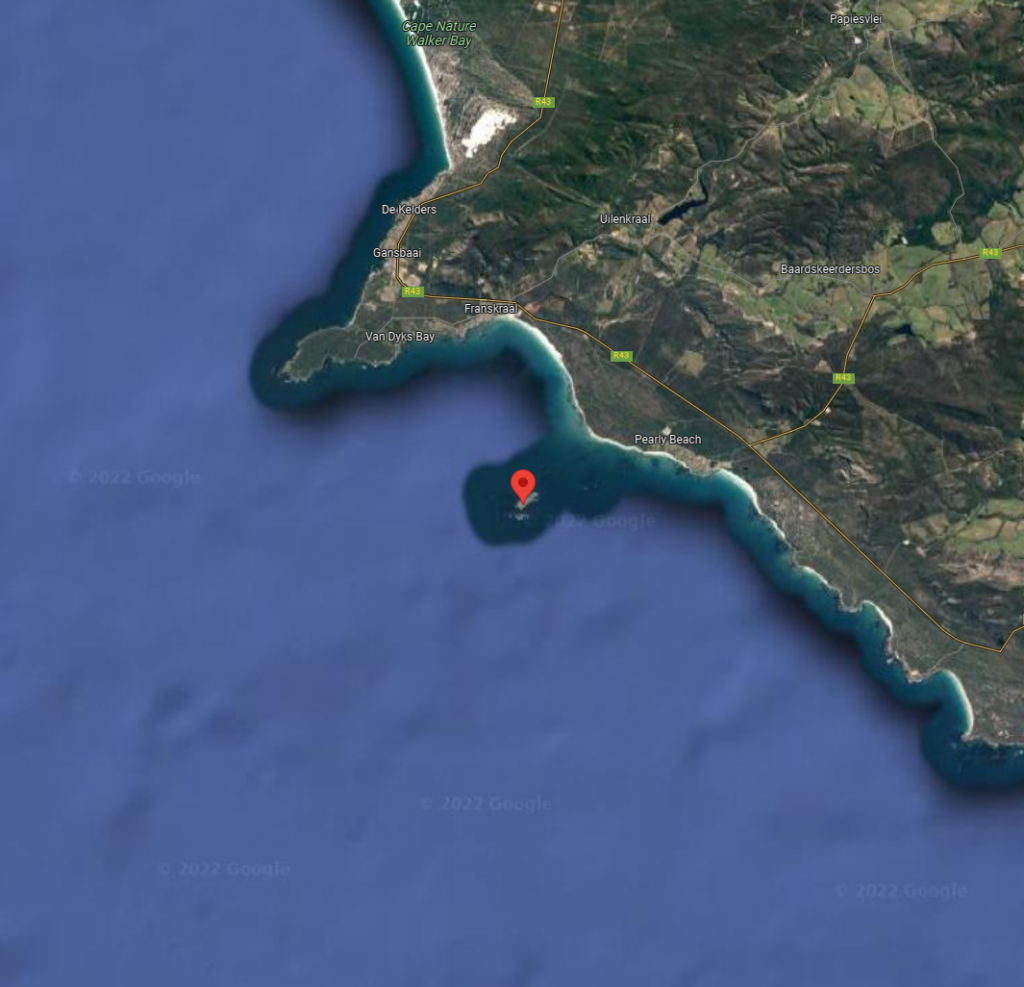
Locals have been naming places “shark alley” for a long time, but there is one that gets national attention. Shark alley, located in the waters around Dyer Island, South Africa, is famous for having the highest population density of great white sharks in the world.
Dyer Island is a small island located only a few miles off the southern shores of mainland South Africa. The island, aside from being the shark capital of the world, is also a nationally protected penguin and seabird sanctuary. Additionally, tourists from all over take cruises to witness the diverse ecology that lives on and around the island.
Still, why does such a small, rocky island attract so many of the greatest predators in the world?
Why Does Shark Alley Attract So Many Great White Sharks?
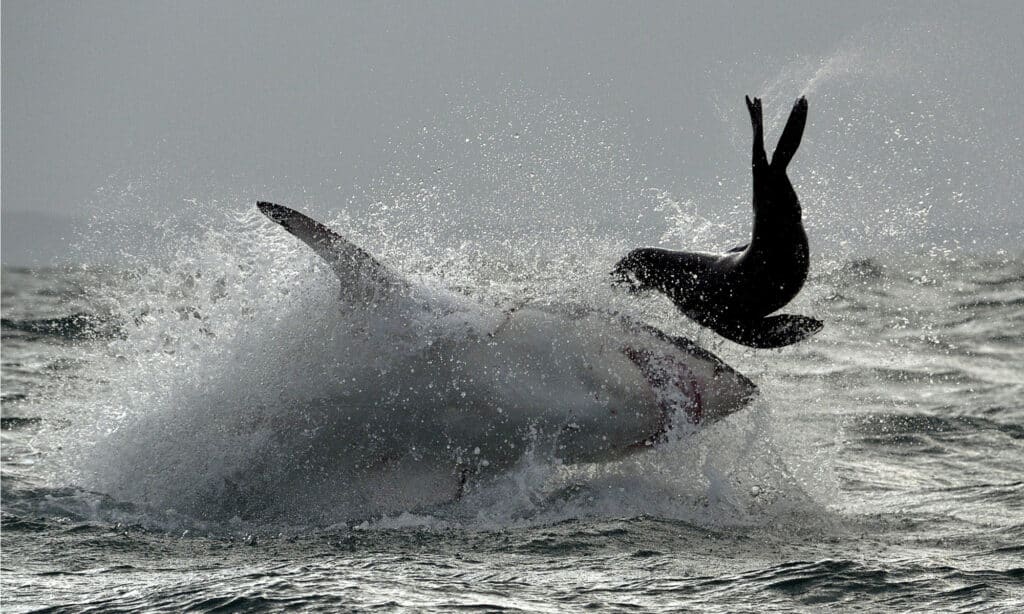
Great whites love seals, and Dyer Island has 60,000 of them.
©Sergey Uryadnikov/Shutterstock.com
As much as humans would view Dyer Island as a rocky and uninhabitable place to live, it’s actually the defining feature of the area. The rocky shores and rich waters in the surrounding area make Dyer Island the perfect home for a variety of sea life, most notably seals.
Together with nearby Geyser Rock, shark alley is home to a thriving population of over 60,000 seals. Almost any place in the world that has a dense population of seals is likely to have a dense population of great whites. Although great whites are opportunistic hunters, they heavily prefer seals. Great whites have been recorded hunting seals, sea lions, northern elephant seals, brown fur seals, harbor seals, California sea lions, and grey seals. It’s safe to say that if seals (or any other pinnipeds) are in the area, sharks are too.
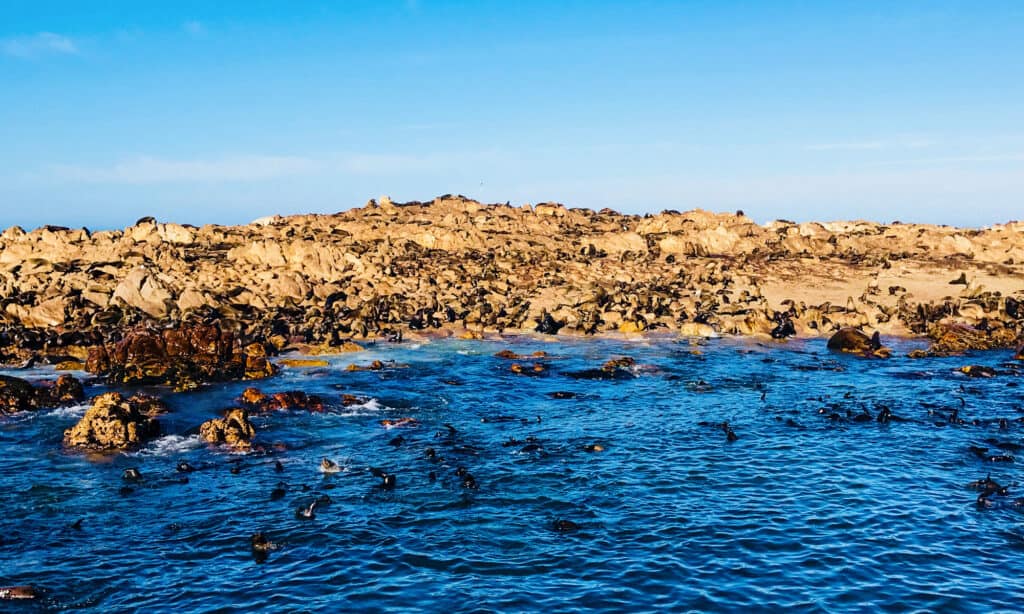
There are over 60,000 seals living around shark alley.
©iStock.com/Maxine Weiss
Since great whites are so large, they need a high caloric intake to sustain them. A fatty seal covered in protective blubber may be one of the most calorie-dense meals on the face of the earth. In just 100 grams of seal blubber, there is an estimated 772 calories. If a grey seal weighs around 800 lbs, a shark could likely get around 200,000 calories from securing a catch.
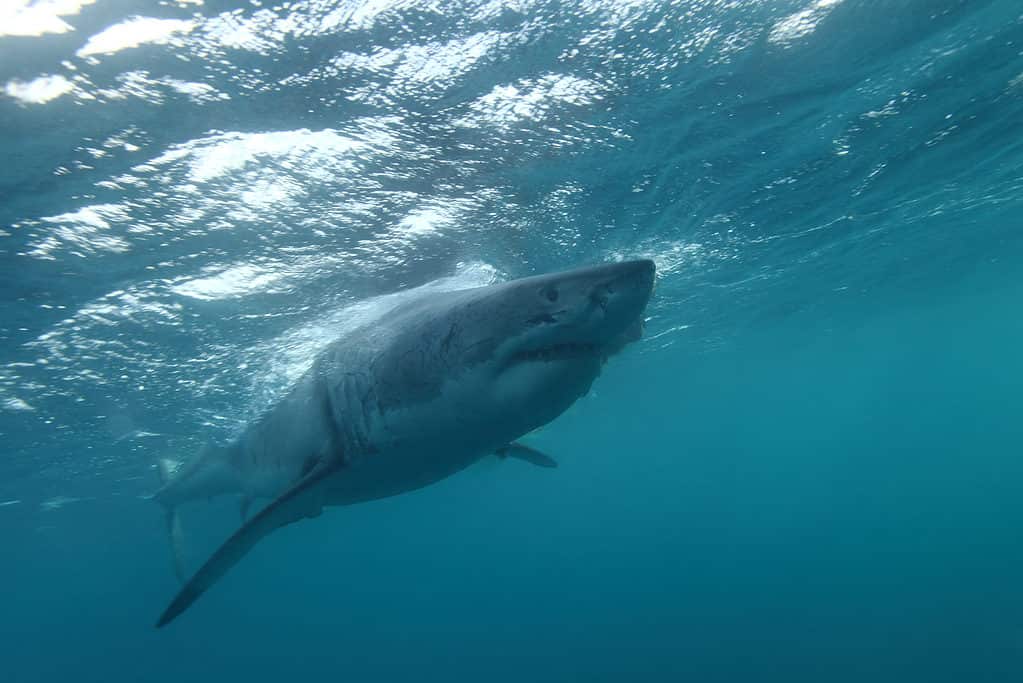
Great white sharks are apex predators of the world’s oceans.
©iStock.com/Alessandro De Maddalena
What Are Other Great White Hotspots Around The World?
Great whites are extremely widespread, even if there isn’t a large number of them. You can find great whites in coastal waters in nearly every major ocean, but they do congregate in certain hotspots.
The highest densities of great white sharks can be found in the following areas:
- along the Baja California to Hawaii migration route
- along the Atlantic Coast
- in the Mediterranean Sea
- along the southern tip of Africa and up through the Mozambique (Madagascar) Channel
- across Oceania, especially around Australia and New Zealand
Although great whites are migratory, they are often found in some numbers in various places, including the ones mentioned. Even still, just because a location isn’t a “hot spot” for great whites does not mean they are not likely to still be around.

You can find Great White Sharks in every major ocean on the planet.
©Willyam Bradberry/Shutterstock.com
What Kinds Of Foods Do Great Whites Prefer?
Great white sharks eat a wide variety of foods. As mentioned, seals and other pinnipeds are their favorites, but they aren’t picky if something else presents itself. Other common foods for great whites include cetaceans (including dolphins and small or injured whales), tuna, mackerel, sunfish, other sharks, and seabirds.
Do People Swim In Shark Alley (Dyer Island)?
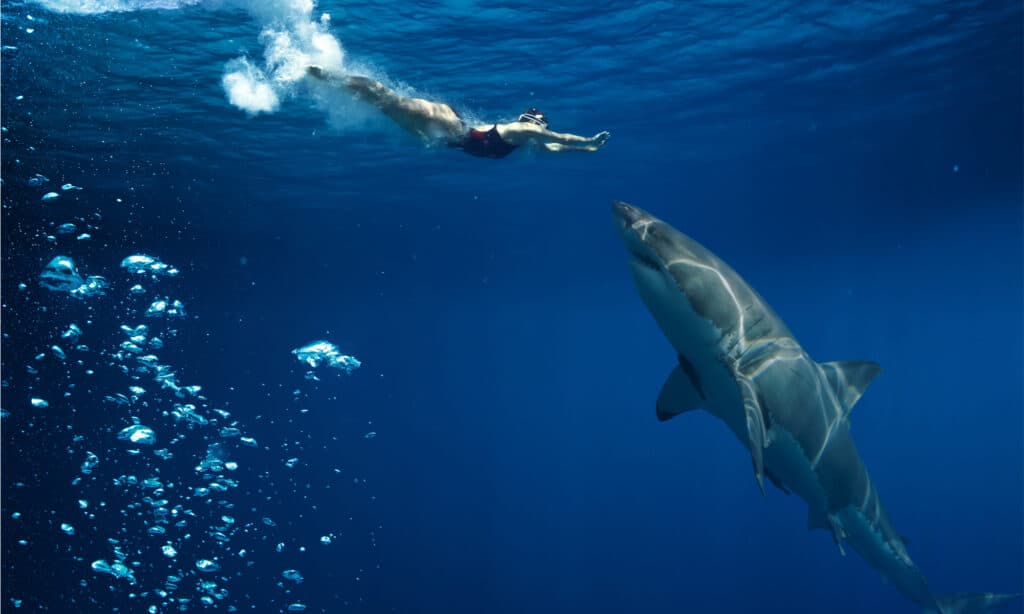
One man recently swam from Cape Town to Dyer Island and back.
©Willyam Bradberry/Shutterstock.com
As crazy as it sounds, some people do swim in the areas around Dyer Island. Dewet du Toit from Stellenbosch recently became the first man to swim the 7.7 km to Dyer Island and back to the mainland. Aside from it being really cold, the area is famous locally for its shark population. Yet, the goal of the swim wasn’t just for fun. Dewet was raising awareness for the sharks that are extremely threatened in the area and wanted to show just how misunderstood the sharks are.
In addition to free swimming, regular tours and caged shark dives are offered around the island. DICT (the Dyer Island Conservation Trust) is an organization that protects, researches, and cares for the place that many are afraid of. Using the money generated by the tours and dives, they look after the area.
Can You Swim Where Great White Sharks Live?
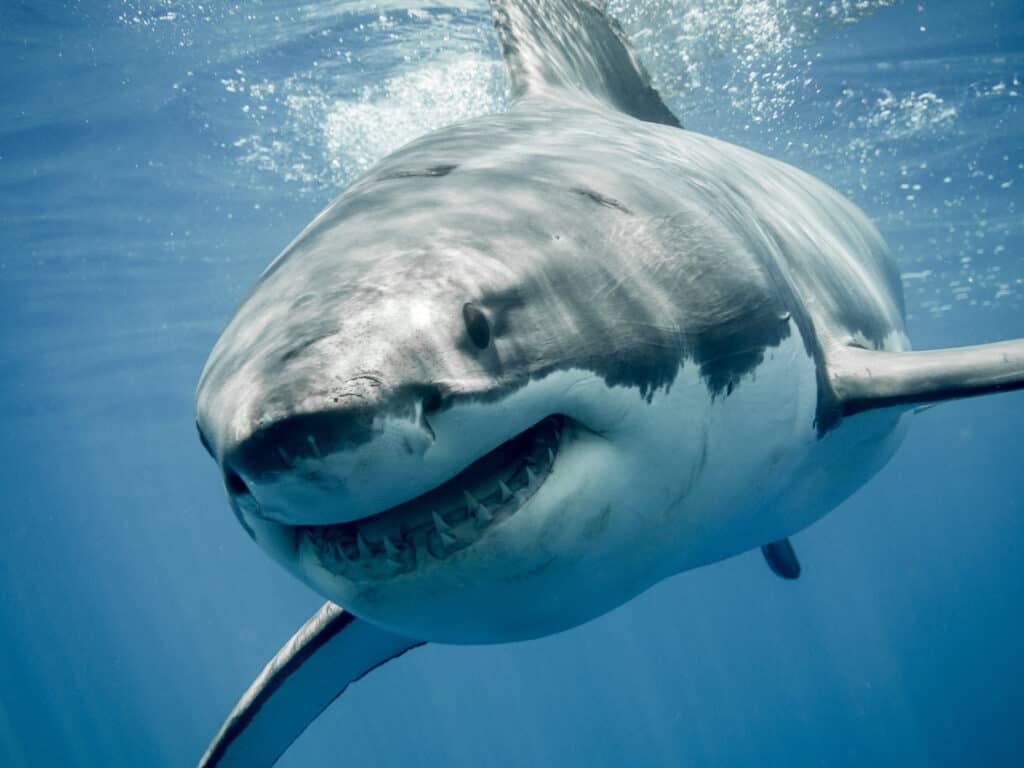
If you’ve ever been in the ocean, you’ve already been swimming where sharks live.
©Ramon Carretero/Shutterstock.com
The idea of swimming with great whites is incredibly scary. People often wonder if it’s safe to swim in the ocean, knowing that these predators lurk beneath the surface. While seeing a shark would be terrifying if you were in the water, the likelihood of being attacked is extremely low. If you’ve ever been in the ocean for any amount of time, it’s extremely possible that a shark was within a few hundred feet of you.
As Dewet stated after his swim:
Last year, ten people out of a population of 8,000,000,000 people were killed by a variety of shark species. During the same period 240,000 people drowned.
“We should be 24,000 times more afraid of water than of sharks,” du Toit points out.
Cape Town etc.
Can you swim where great whites live? Well, if you have ever swam in the ocean, you already have your answer!
The photo featured at the top of this post is © Willyam Bradberry/Shutterstock.com
Thank you for reading! Have some feedback for us? Contact the AZ Animals editorial team.






